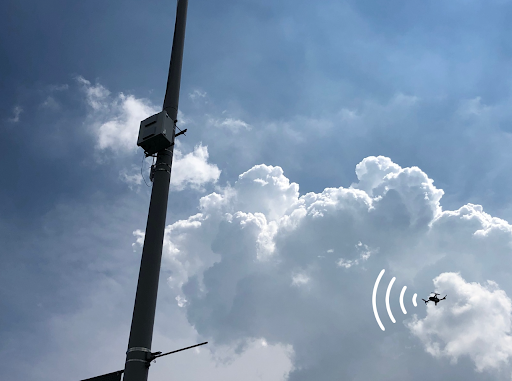Summary: Modern drone detectors, particularly RF-based systems that include FAA Remote ID broadcast reception, offer compact, affordable airspace awareness tools rather than bulky, high-cost setups. In this article, we debunk common misconceptions, such as the need for large gear, decoding signal content, and budget considerations.
Radio Frequency (RF) based Remote ID drone detector systems emerged as the leading technology for organizations to identify and respond to drone threats because RF is the only type that can detect both drone and pilot. This actionable intelligence is critical for the majority without mitigation authority (ability to take a drone out of the sky), but also has applications for federal agencies granted this authority.
Because an RF-based drone detector is one of the only viable solutions across industries/use cases, it gets a lot of attention. Unfortunately, misconceptions run amok. With this blog, we hope to clarify some of these misconceptions for you.
1 - Drone Detector Gear is Too Bulky and Unsightly
It’s true that some military-grade detection systems are large and were never designed for commercial or urban environments. Even some commercial systems can be bulky, but that’s not always the case.
Today, compact and discreet drone detection systems are available — including options designed specifically for temporary or portable deployments, where size and setup time matter most.
Bulky equipment can be a major drawback when it needs to be moved frequently, set up quickly, or approved by multiple stakeholders. City planners, property managers, or event organizers may restrict large gear due to aesthetic concerns, permitting limitations, or site policies — especially when equipment needs to be installed on rooftops, utility poles, or temporary structures.
Fortunately, modern RF-based systems offer powerful detection capabilities in a compact footprint, making them ideal for both flexible short-term use and permanent installations where space or visibility is a concern.
2 - Reading Signal Content is the Best RF Detector/Location Method
Reading the content of drone communication signals might sound effective in theory, but in practice, it’s neither necessary nor legally advisable.
In the U.S., intercepting or decoding the content of drone signals — like live video feeds or control commands — can violate federal wiretapping and privacy laws, especially when those signals are encrypted. Most commercial drones use encrypted links between the controller and the drone, making content unreadable without unauthorized decryption, which is illegal and unnecessary for detection purposes.
Instead, modern RF-based systems leverage Remote ID, which was specifically designed by the FAA to broadcast drone and pilot location information openly and legally over unlicensed radio frequencies. These broadcasts are intended for third-party detection and public awareness, so receiving them is fully compliant and straightforward.
Rather than attempting to read signal content, the most effective and lawful approach is to monitor signal characteristics and legally accessible broadcasts like Remote ID. This method enables organizations to detect, track, and identify compliant drones — and gain airspace awareness without crossing any legal lines.
3 - You Need a Huge Budget to Deploy RF Drone Detectors
That’s a common misperception, and fortunately, with advances in drone detectors, this is no longer true!
With the FAA’s Remote ID rule in effect, drones are now required to broadcast identifying information over radio frequencies, including their location, unique ID, and often the pilot’s location. This shift has made it possible for RF-based detection systems to focus on receiving and interpreting these standardized signals.
Because Remote ID broadcasts are designed to be openly received, RF-based detection solutions can now be deployed more affordably and with far less complexity than in the past. Many organizations are finding that Remote ID-enabled systems provide the situational awareness they need, without the high costs often associated with RF technology.
In short, Remote ID has helped make RF-based drone detection much more accessible to a wider range of organizations.
4 - Remote ID Signals can’t be Trusted
It’s not easy to bypass or spoof Remote ID signals — doing so requires advanced technical skills and custom modifications. In many cases, attempting to tamper with Remote ID can render the drone unable to fly, making it an impractical choice.
For organizations concerned about these edge cases, combining Remote ID with broader RF detection systems helps identify both compliant drones and those operating outside the rules.
5 - I Can Get Authorization to Use a System That Mitigates or Reads Signal Content
Under current laws, no private entity, not even a law enforcement agency, can obtain authorization to use a system that mitigates or reads signal content.
Through the Preventing Emerging Threats Act of 2018 (codified as 6 U.S.C. § 124n), DOE, DOD, DOJ, and DHS can apply for authorization to use such systems in the United States. However, the process, as explained here, is arduous, and once the equipment is placed, it cannot be moved without re-application.
You can also learn more by reading our Ultimate Guide to Drone Detection.


